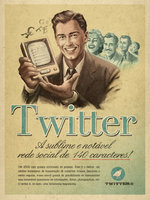What the Advertising Industry Learned From the Olympics
Posted in: UncategorizedWell, it’s over; the XXX Olympics have come and gone. Two weeks of non-stop athletic competition led to Sunday’s Closing Ceremony. After watching the Opening Ceremony with its stunning visual and historical festivities, I was not sure what to expect. Would the Queen do another stunt? Would David Beckham fly a helicopter into the stadium with all of the Spice Girls on board? Would Sir Elton John sing with Bono, U2, and Mick Jagger? Would the Olympic flame be disassembled and taken away in a hot air balloon?
Wow; Britain did the Closing Ceremony right. Motor scooters traversing the stadium, singers on Rolls Royce convertibles, dancers gyrating, Eric Idle with angels, Russell Brand and Fat Boy Slim, Super Models strutting their stuff, Annie Lennox singing, and the Spice Girls – all of them. (With Victoria and David Beckham, is this the first husband, Opening Ceremony, and wife, Closing Ceremony, Olympics?) Everywhere you looked there were British flags – the Union Jack in cloth, on uniforms, in electric lights, and in human form. As you watched the Parade of Athletes, each athlete looked happy, having fun, and enjoying his or her moment in the sun. We watched the athletes, and the athletes watched us, and each other.
Back to the Olympic competitions, how did we do? If you consider Team USA and the number of Olympic medals, we did great! Counting total medals or total number of gold medals, we beat China and Russia. Our athletes won many of the big signature events in the most popular sports – soccer, basketball, beach volleyball, swimming, track and field, and gymnastics. There were real standout performances and close competitions that will prove long-lasting memories, like U.S. vs. Canada in women’s soccer, U.S. vs. China in women’s beach volleyball, Michael Phelps’ treasure trove of medal wins, and Gabby Douglas’ smile.
What about the Olympics of Advertising? This is our industry. How did we do?
The media: NBC and its related media properties, as well as its media partners did great. Though it cost a lot to secure the rights and produce this event, there were good ratings across the board; dollars were flowing; programs and channels were promoted; and NBC Sports did itself proud.
The advertisers: They got ratings and viewers, global exposure, positive association, and entertainment opportunities for themselves and their most significant customers and clients. The Olympic sponsors reinforced to the world that by being in the club, they were in a league of their own.
The agencies: The creative and media agencies were able to work on the most global of stages; the budgets expended were substantial; and agencies were able to bond with their most important clients while sharing “the thrill of victory and the agony of defeat.”
The work: As I had said in my earlier article, it is not for me to critique the advertising. Neither the industry nor the public has the same expectation for Olympic advertising as they do for the Super Bowl. The Super Bowl is the fiercest competition amongst marketers and agencies to determine which agencies and advertisers can create the best advertising, win the top awards, including the USA Today poll, top the online and social media reviews and rankings, and dominate the Monday morning water fountain chatter. Advertisers and agencies see the Olympics as an event that provides substantial business opportunities, and the agencies create and produce work that executes against their clients’ strategies.
Despite the import of this global event, the industry may be missing an opportunity. On this global stage, building excitement and anticipation about not just the sports, the competition and the athletes, but about the advertising, would benefit all concerned – the media, the advertisers, the agencies, and the public. The Olympics as an event is much longer than the Super Bowl. This fundamental difference makes the challenge of creating and producing advertising that is viewed with the same level of reverence and surprise and that stimulates the same amount of anticipation and chatter, that much harder. But these challenges do not mean that we as an industry shouldn’t have lofty goals and expectations.
Here is my challenge for the next summer and winter Olympics. Advertisers and agencies should commit to making the Olympics not just the greatest stage for global athletic competition, but the greatest stage for advertising creativity. Advertisers must recognize that advertising is not a commodity, but an art form, and an agency, like an athlete, must have the necessary support, resources and budgets to compete at the highest level. Agencies must not be satisfied with singles and doubles, they should swing for the fences, and sometimes they will make the crowds roar and other times they will sigh. But this level of effort and these high standards will show the world that competition is at the highest level, and the advertising will be worthy of being associated with the Olympics and the athletes. If this happens, the media, the public, and the athletes will all be pleased. There should not be one Super Bowl; there should be two weeks of Super Bowls. Let’s all work together to make it happen.
Here’s to the next Olympics, and all of the new events and awards – the ones for the advertisers and the agencies.












